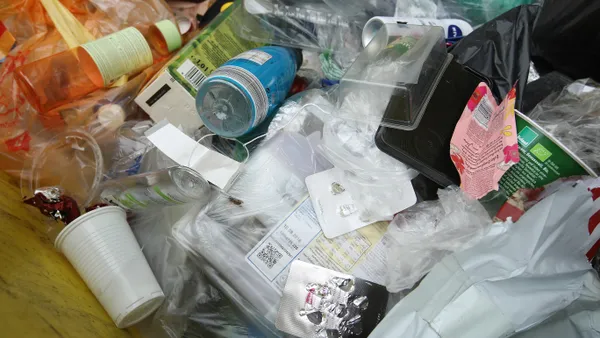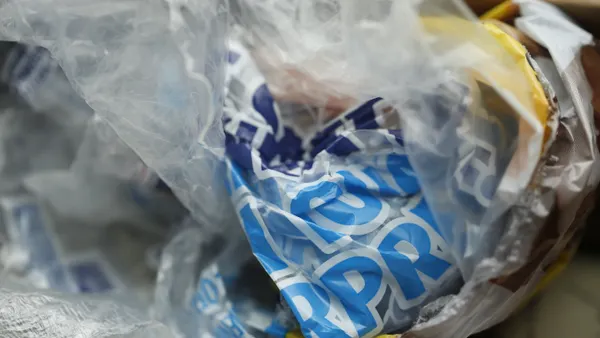Dive Brief:
- The Environmental Protection Agency’s sustainable materials management activity continues under the Trump administration, with new reports and areas of interest in the works, according to presentations at this week’s Measurement Matters Summit in Chattanooga, TN. That includes the 2015 Facts & Figures report, due out later this year on a new interactive website.
- The agency is also working on Version 15 of its widely used Waste Reduction Model (WARM), due out in 2019. Following updates in Version 14 that connect it with openLCA software and change multiple material categories, future editions are expected to look at other criteria beyond greenhouse gas emissions. Water and land use, eutrophication and human toxicity were some of the possibilities mentioned.
- Ron Vance, chief of the Resource Conservation Branch, also outlined scoping priorities for future years. That includes finding ways to measure recycling efficiency, developing a national litter rate, calculating a national contamination rate for material leaving MRFs, and gaining a better understand of infrastructure capacity and material flows.
Dive Insight:
EPA's reports and models in this space have been mainstays for decades. During the Obama administration, former Office of Land and Emergency Management Assistant Administrator Mathy Stanislaus was a leader in the SMM conversation. The agency's work on food waste, marine plastics, environmental justice and landfill emissions standards were all cited as accomplishments by former Administrator Gina McCarthy in her Jan. 2017 exit memo.
Yet many have wondered how the agency's SMM work would fare under President Trump — and Administrator Scott Pruitt. So far, the assistant administrator position remains vacant at OLEM. While the cloud of uncertainty has seemed to weigh on some staffers at meetings and events over the past year, they had a strong presence in Chattanooga this week with new information to share.
Along with Vance and multiple regional staffers, the event was attended by both Office of Resource Conservation and Recovery Deputy Director Kathleen Salyer and Resource Conservation and Sustainability Division Director Cheryl Coleman. During introductory remarks, Coleman said the agency's ongoing state measurement collaboration fit well with Pruitt's "cooperative federalism" agenda. The administrator has also shown interest in food waste diversion, including a visit to Disney World's anaerobic digester last fall.
Aside from some brief noise around revisiting Obama-era landfill emissions guidelines and movement on some Superfund sites, the waste sector has largely flown under the radar otherwise. The fact that much of the EPA's work in this space is as a facilitator of voluntary efforts, rather than a regulator, may be a factor.
Budgetary and political tensions may still slow some of that, and the delay in releasing the next Facts and Figures report, which traditionally has a two-year lag time, didn't go unrecognized. Though the federal government has never been known for its adaptive speed.
Multiple speakers shared their critiques throughout the day about WARM features they'd like to see changed. Accuracy of the top-down method used to calculate that annual facts data has also been questioned by some, including the Environmental Research & Education Foundation. In 2016, the EPA told Waste Dive it had made "significant efforts" to update methodology and cited the State Measurement Program as a sign of data standardization progress.
None of this means the agency's role isn't still important. When Vance mentioned the 1997 Measuring Recycling guide as a resource, he elicited many knowing nods in the room. WARM remains a go-to for agencies and companies alike. SMM has become a driving priority for states such as Oregon and more recently Maryland.
Without a change in regulatory authority over recycling policy — something that's not expected to happen regardless of politics — the EPA will never be a perfect vessel for achieving the sustainability ideals that many desire. That doesn't mean the agency can't play a vital role, especially for government officials and private industry, in helping shape the conversation.










